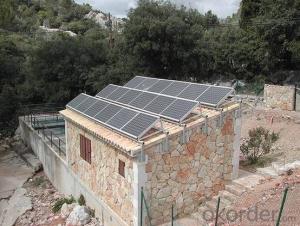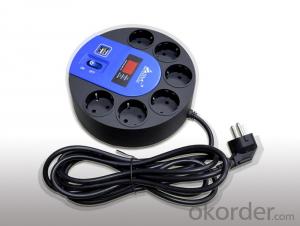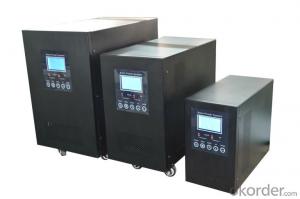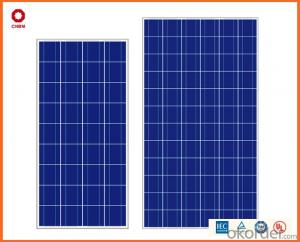Solar Energy Systems Idaho - Waterproof American Standard Extension Electrical Switch Socket
- Loading Port:
- China main port
- Payment Terms:
- TT OR LC
- Min Order Qty:
- 30 carton
- Supply Capability:
- 10000 carton/month
OKorder Service Pledge
Quality Product, Order Online Tracking, Timely Delivery
OKorder Financial Service
Credit Rating, Credit Services, Credit Purchasing
You Might Also Like
American Waterproof Standard Extension Electrical Switch Socket
Product Description

1. Wide range of input voltage
2. Provides stable output voltage and overload protection(Optional)
3. Provides over-voltage and overload protection(Optional)
4. 3-steps time delay function protects the comptessor against any consecutive starts (Optional)

| Model | G-2006 | G-4006 |
| Voltage range | 180-245Vac | |
| Current | 10A | |
| Insulation voltage-withstand | 1500 / 1min 2000V 3sec | |
| Insulation resistance | ≥100 | |
| Power cord | Cross-sectional area:3*0.75 | |
| Operating life | 10000 times | |
| Net weight (kg) | 0.55 | |
| Environment | Temperature 0℃~40℃ | |
- Q: Can solar energy systems be used in powering green hotels or eco-resorts?
- Yes, solar energy systems can definitely be used to power green hotels or eco-resorts. Solar panels can be installed on the roofs of buildings or in nearby areas to generate electricity from the sun's rays. This renewable energy source helps reduce the carbon footprint of these establishments by reducing reliance on fossil fuels. Additionally, solar energy systems can also provide hot water for showers and pools, further enhancing the sustainability of these eco-friendly accommodations.
- Q: Do solar energy systems require surge protection?
- Yes, solar energy systems require surge protection.
- Q: How does a solar panel generate electricity?
- A solar panel generates electricity through the photovoltaic effect, where sunlight is converted into electrical energy. This process occurs when the photons in sunlight strike the solar cells within the panel, causing the electrons in the cells to be excited and flow as an electric current.
- Q: What is the impact of tree shade on the performance of solar panels?
- The impact of tree shade on the performance of solar panels can be significant. When solar panels are shaded by trees, their ability to convert sunlight into electricity is greatly reduced. This is because shade prevents direct sunlight from reaching the panels, reducing their overall efficiency. Shade on solar panels can create a phenomenon known as "partial shading," where only a portion of the panel is shaded. In this case, the shaded portion of the panel acts as a barrier, preventing the unshaded portion from producing electricity at its maximum capacity. This results in a decrease in the overall energy production of the solar panel system. Tree shade can also cause an imbalance in the output of solar panels that are connected in series. When one panel is shaded, it can significantly reduce the performance of the entire series, as the shaded panel acts as a bottleneck for the flow of electricity. This can lead to a decrease in the overall energy generation of the solar system. It is worth mentioning that the impact of tree shade on solar panels depends on various factors such as the intensity and duration of the shade, the orientation and tilt angle of the panels, and the efficiency of the panels themselves. Additionally, advancements in solar panel technology, such as the use of bypass diodes in modern systems, can help mitigate the negative effects of shading to some extent. To optimize the performance of solar panels in the presence of tree shade, it is important to consider the placement and design of the solar panel system. This may involve trimming or removing trees that cast shade on the panels, adjusting the tilt angle of the panels to minimize shade impact, or considering alternative locations for the installation of the panels where shade is less of a concern. Overall, tree shade can have a significant impact on the performance of solar panels, reducing their efficiency and energy production. It is crucial to carefully consider the effects of shade when planning and designing a solar panel installation to maximize its effectiveness.
- Q: What are the different applications of solar energy systems in transportation?
- Solar energy systems can be used in transportation for various applications, including powering electric vehicles, charging stations, and providing energy for auxiliary systems such as lighting and ventilation in vehicles. Solar panels can be integrated into the design of vehicles or installed on rooftops of cars, buses, and trains to harness solar energy and reduce dependence on fossil fuels. This renewable energy source can help mitigate greenhouse gas emissions, increase energy efficiency, and promote sustainable transportation.
- Q: Can solar energy systems be used in areas with high levels of hail or other severe weather conditions?
- Yes, solar energy systems can be used in areas with high levels of hail or other severe weather conditions. While severe weather conditions like hail can potentially damage solar panels, modern solar panels are designed to withstand various weather conditions, including hailstones of a certain size and velocity. Solar panels are typically made with durable materials such as tempered glass and are tested to withstand hailstones of a specific size and impact force. They are engineered to be strong enough to endure hailstorms without shattering or losing their efficiency. Additionally, solar panels are often installed at an angle to allow hailstones to slide off rather than directly impact the surface, further minimizing the risk of damage. Furthermore, advancements in solar technology have led to the development of more robust and resilient solar panels. For instance, some manufacturers offer panels with enhanced hail-resistant features, such as reinforced glass or protective coatings, to provide extra durability in areas prone to severe weather conditions. It is important to note that while solar panels can withstand hail, the severity and frequency of the hailstorms should be taken into consideration when planning and installing solar energy systems. Local weather patterns and historical data can help assess the risk level and determine the appropriate measures for protecting the panels, such as using hail guards or installing additional protective layers. In conclusion, solar energy systems can be used in areas with high levels of hail or other severe weather conditions as long as the panels are designed and installed to withstand such conditions. Proper planning, the use of resilient materials, and periodic maintenance can help ensure the long-term performance and durability of solar energy systems in these areas.
- Q: Can solar energy systems be used for powering data centers or server farms?
- Yes, solar energy systems can be used to power data centers or server farms. By harnessing the power of the sun through photovoltaic panels, solar energy can provide a sustainable and renewable source of power for these energy-intensive facilities. This can help reduce their carbon footprint and reliance on traditional grid electricity, making them more environmentally friendly and cost-effective in the long run. However, implementing solar energy systems for large-scale data centers or server farms may require careful planning, adequate space, and backup storage solutions to ensure consistent power availability.
- Q: What is the role of solar energy systems in reducing dependence on fossil fuels?
- The use of solar energy systems is vital in decreasing reliance on fossil fuels as they offer a clean and renewable energy source. For centuries, coal, oil, and natural gas have been the primary sources of energy; however, their extraction, transportation, and combustion have had significant environmental effects, including air pollution, greenhouse gas emissions, and climate change. Conversely, solar energy systems utilize the sun's power to generate electricity. Solar panels, composed of photovoltaic cells, convert sunlight into usable energy without emitting harmful pollutants. This clean energy source not only helps combat climate change but also enhances air quality and reduces health hazards associated with burning fossil fuels. By adopting solar energy systems, we can lessen our dependence on fossil fuels for electricity generation, heating, and cooling. Solar power is abundant, widely available throughout the year, and can be relied upon, making it a dependable and sustainable energy option. Moreover, solar energy systems can be installed on various scales, from residential rooftops to large-scale solar farms, allowing individuals, communities, and businesses to contribute to the shift away from fossil fuels. Solar energy not only decreases our carbon footprint but also provides economic advantages. As technology advances and becomes more widespread, the cost of solar panels and installation continues to decrease. This makes solar energy more affordable and accessible for both individuals and businesses, leading to job creation and economic growth in the renewable energy sector. Additionally, solar energy systems offer energy independence and resilience. Unlike finite fossil fuel resources that are subject to price volatility, sunlight is abundant and freely available. By harnessing solar power, we can reduce our dependence on imported fossil fuels, strengthen energy security, and establish a more stable and sustainable energy supply. In conclusion, solar energy systems have a critical role in reducing reliance on fossil fuels. By harnessing the sun's power, we can transition to a cleaner, more sustainable, and resilient energy future. Solar energy aids in mitigating climate change, improving air quality, creating jobs, and providing energy independence. It is a viable solution that allows us to decrease our environmental impact while meeting our energy requirements.
- Q: Can solar energy systems be used for powering off-grid research stations in Antarctica?
- Yes, solar energy systems can be used for powering off-grid research stations in Antarctica. Solar panels can be installed to capture sunlight and convert it into electricity, which can then be stored in batteries for use during periods of low sunlight. This renewable energy source is a viable and sustainable option for powering remote research stations in Antarctica, reducing reliance on fossil fuels and minimizing environmental impact.
- Q: Are there any financing options available for solar energy systems?
- Yes, there are several financing options available for solar energy systems. These options include solar loans, solar leases, power purchase agreements (PPAs), and government incentives such as tax credits and grants. These financing options help make solar energy more accessible and affordable for homeowners and businesses.
Send your message to us
Solar Energy Systems Idaho - Waterproof American Standard Extension Electrical Switch Socket
- Loading Port:
- China main port
- Payment Terms:
- TT OR LC
- Min Order Qty:
- 30 carton
- Supply Capability:
- 10000 carton/month
OKorder Service Pledge
Quality Product, Order Online Tracking, Timely Delivery
OKorder Financial Service
Credit Rating, Credit Services, Credit Purchasing
Similar products
Hot products
Hot Searches
Related keywords






















